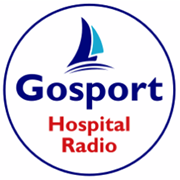A cancer patient who lost movement in his face can smile again – thanks to innovative surgery carried out at Queen Alexandra Hospital in Portsmouth for the first time.
52 year old Daniel Kilty from Midhurst lost the ability to smile after suffering from total facial paralysis following a cancer diagnosis last year.
Insurance operations director Dan was diagnosed with acinic cell carcinoma – a slow growing cancer in his cheek – which affected the movement in his face.
A surgical team of 12 at Portsmouth Hospitals University NHS Trust carried out a rare procedure to not only remove a tumour – which was wrapped around Dan’s facial nerve – but then replace and connect a chewing nerve to a smiling nerve to allow movement and expression again in his face.
Only a few hospitals in the country have performed this type of surgery, and usually only on children born with congenital facial palsy from birth or for those with facial palsy caused by injuries.
Daniel said: “The team at Queen Alexandra Hospital have been fantastic – I feel like I have had the complete QA experience. I have interacted with so many teams along the way, from the radiographers doing my scans, to the ENT and Max Fax consultants and nurses, to my speech therapist and physiotherapist, as well as the dentistry team – everyone has been absolutely brilliant throughout.
“I’m not only cancer free, but I can smile again, and I have a promising future ahead. I can’t thank the amazing teams at QA enough!”
Daniel, who lives with his partner of 28 years Cathrine, first noticed signs that something was not right in December 2021, when his right eye became itchy and food was getting stuck between his teeth and inside cheek. The right side of his face slowly started to become numb and he went to his GP, who initially suspected Bell’s Palsy but referred him for tests to confirm at QA Hospital.
Said Daniel: “It was really difficult for me when I suffered facial paralysis. I’m naturally a cheerful person, who uses their smile to engage with people. In my various roles – at home and at work – I spend a lot of time interacting with people and losing such an important tool really felt like a loss. Even worse than that, because the right side of my face collapsed, I looked perpetually grumpy!
“I also found it very difficult, the way that people would look at me – in the street, on the train, or in a shop – that slightly longer stare that says ‘there’s something wrong about how you look.'”
He continued: “In my roles – in my family and at work – I do a fair amount of public speaking and here again it was difficult, firstly, I could hear in my voice that some words weren’t coming out as intended. P’s in particular were difficult to pronounce. Until something like this happens, you don’t realise how much your facial muscles affect your mouth shape and hence ability to speak.
“As part of the surgery, the team put a sling in my face that holds up my mouth – this both helps me to look more normal, makes smiling easier (less distance to travel) and immediately and noticeably, improved my speech. My family commented on this straight away.
“Since the operation – although the speech therapy support has primarily been about re-training my cheek muscles, to allow me to smile and close my eye, it has also helped me with speaking again and helped to restore my confidence about speaking in public.”
Daniel was the first patient at QA Hospital to undergo this specific surgical technique, called ‘facial reanimation’ which was introduced at Portsmouth Hospitals University NHS Trust by surgeons Alex Goodson and Matthew Ward, who went to Austria and Australia to learn the specifics of the technique.
Mr Alex Goodson, Consultant Maxillofacial Cancer, Reconstructive and Aesthetic Surgeon, and part of the surgical team at Portsmouth Hospitals University NHS Trust, explained: “The surgery involved removing the tumour, which was wrapped around and had invaded the facial nerve, connecting the part of the cut facial nerve close to his brain to his eyelid muscles using a nerve graft to allow eye closure and importantly, we connected his chewing nerve to his smiling (facial) nerve; all done by suturing them together under a microscope with sutures so small that they are practically invisible to the naked eye.
“This is a very rare procedure in the UK and there are just a handful of hospitals doing this. We are slightly unique as we have been doing this successfully in head and neck cancer patients: getting this to work to a normal level of function, even when the patient has had radiotherapy after the surgery.”
Dr Matthew Ward, Consultant ENT, Head and Neck, Thyroid and Parathyroid Surgeon, added: “We’re so pleased to have given Daniel, who had total facial paralysis from an invasive cancer, the opportunity to not only live again but the chance to smile again.
“Without this procedure, Daniel would have been able to eat and speak fine, but he might not have had as much social confidence to be able to smile and demonstrate emotion in private or public.
“We want to stress this has been a real team effort by our colleagues across the hospital, who have all worked with Daniel to get to this point. We have a firm belief at the Trust, we must do the very best we can to give our survivors of head and neck cancer, the very best quality of life outcomes. Therefore, if we are successful in treating their cancer, then we will do our best to ensure they have a life that they can enjoy, as best as technically possible, to the fullest potential.”
The Trust’s Head and Neck Unit is a multidisciplinary team made of Maxillofacial surgeons, ENT surgeons, H&N anaesthetists, Oncologists, Radiologists, Pathologists, Dentists, Nurse specialists, Speech therapists, Dieticians and our own administrative team, with additional support from allied specialists (e.g. electrophysiology); providing evidence-based practice and delivering cutting-edge advanced treatments for both cancer and complex non-cancer conditions of the head and neck on the South Coast.
It is one of the leading units providing minimally invasive transoral robotic surgery for throat cancer and reconstruction, pioneering new 3D-printing techniques for jaw cancer reconstructions, and aesthetic surgery, giving patients the best quality of life and functional outcomes.





